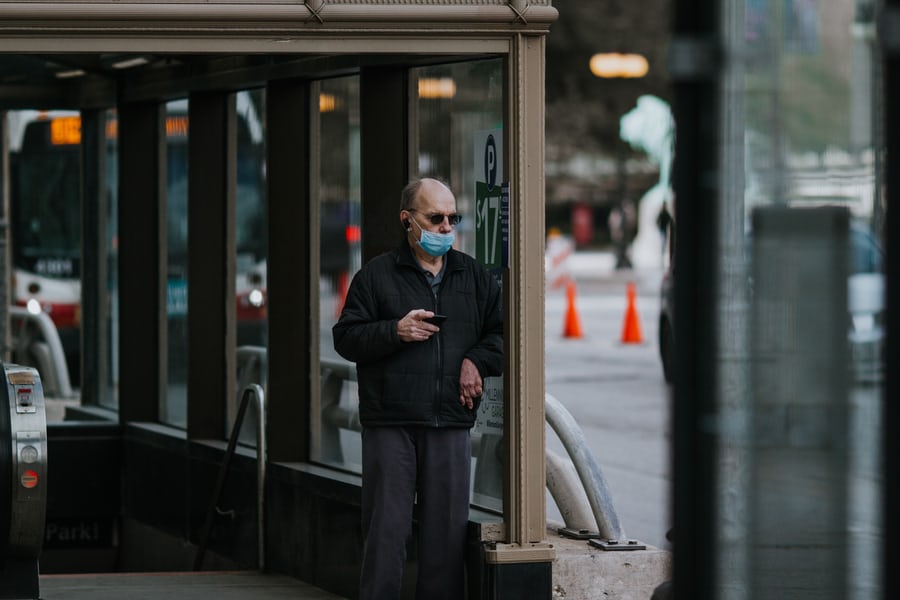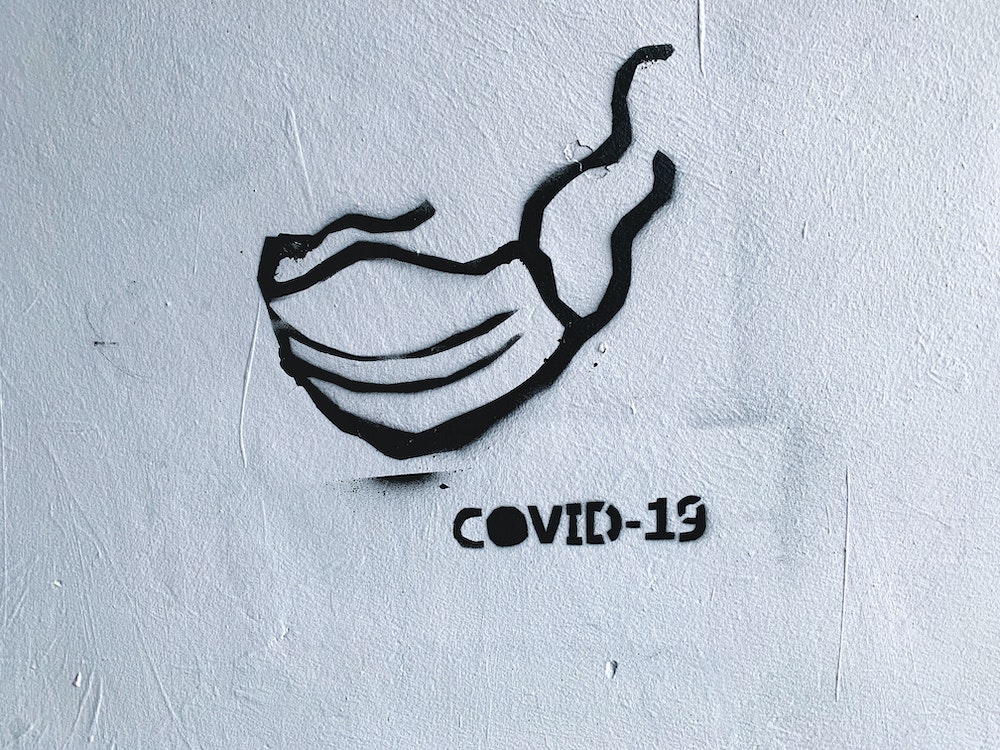This week’s top three summaries: R v Cesar, 2020 ONSC 3165 (http://canlii.ca/t/j7v7w), R v GD, 2020 ONSC 3164 (Westlaw), and R v Leclair, 2020 ONCJ 260 (http://canlii.ca/t/j7zbd).
R v Cesar (ONSC)
[May 21, 2020] Judicial Interim Release – Detention Review – COVID-19 [The Honourable Justice C. S. Glithero]
AUTHOR’S NOTE: Here, the accused sought a a s. 520 review of a detention order issued on the secondary grounds by a Justice of the Peace following a show cause hearing. Justice Glithero determined that the Crown’s concession that the COVID-19 pandemic constituted a material change in circumstances was appropriate. Justice Glithero also had some considerable reservations about the adequacy of the reasons given for the detention order. Justice Glithero concluded that appropriate conditions could sufficiently control the secondary ground concerns
Pertinent Facts
[1] The applicant seeks a s.520 review of a detention order made on January 16, 2020 by a Justice of the Peace in Kitchener, Ontario, following a show cause hearing that same date.
[6] The detention order was issued on the secondary grounds specified in s.515(10).
[7] The position of the applicant is that the application should succeed and he should be granted bail on terms that he reside with his daughter at a named address, that he be required to remain in that house at all times other than certain specified exceptions, and that he be required to abide by other conditions as set by the court, and that there be no surety required.
[8] Ms. Bielefeld of the Public Prosecution Service of Canada also represented the Provincial Crown with respect to the Criminal Code charges. Her position is that the application should be dismissed so as to continue the detention on the basis that if released there was a substantial likelihood he would revert to the commission of crimes.
Change in Circumstances
[12] Here, the applicant submits that the current COVID-19 pandemic constitutes a material change in circumstances, that there is a material change in terms of new evidence as to a new plan for release, and that the justice did not give sufficient reasons in denying bail for Mr. Cesar.
[13] At the hearing, Crown counsel conceded that the COVID-19 pandemic constituted a material and relevant change in the circumstances of the case, particularly here where the original show cause hearing occurred in January, well before the extent and impact of the pandemic was understood in this Province.
[14] In my opinion, the new plan of release involving the residence of the applicant with his daughter, and the proposed term confining him to that residence other than for specific exceptions, qualifies as a material and relevant change in circumstances. As indicated, the Palmer requirements are to be applied but with modified application consistent with the bail circumstances. At the show cause hearing here, the applicant was represented by duty counsel.
[15] Another change in material circumstance is that on the hearing of this application I was advised that the charge of uttering the counterfeit $50 bill has been, or will be, withdrawn. Accordingly, one of the three informations has disappeared as a consideration. The counterfeiting charge was specifically mentioned in the reasons given by the justice for the detention order.
[16] With respect, I have some considerable reservations about the adequacy of the reasons given for the detention order. They consist of one paragraph and recite the facts in skeletal fashion and conclude “so he has not met his onus so I agree with the Crown that there are secondary ground issues here so I’m not going to be releasing on these and citing the secondary grounds.” Because of the two drug charges, this indeed was a reverse onus. But to detain on the secondary ground specified in s.515(10), what is required is a finding that it is necessary to detain for the protection or safety of the public, including any substantial likelihood that if released the accused will commit an offence. As it was a reverse onus situation in this case, the onus was on the applicant to show it is not so necessary, and that there is no substantial likelihood of the commission of further offences. In my opinion it is not enough to order detention because “there are secondary ground issues here”.
[17] In my opinion, the Crown’s concession that the COVID-19 pandemic constitutes a material and relevant change in the circumstances of the case was entirely appropriate. I point to R. v. Morgan, 2020 ONCA 229 where our Court of Appeal took judicial notice of the general health risks, and of the accepted recommended preventative measures, although not in circumstances relating to bail. It seems to me that the current pandemic circumstances are also important as a change in circumstances in another way, in that the current closure of courts for in-court hearings necessarily means a delay in the determination of the applicant’s criminal responsibility. Neither counsel was involved in the show cause hearing and I understand are only involved in this case, at least so far, for purposes of this detention review. Neither could tell me whether the applicant currently has a preliminary hearing scheduled, or has waived it, or what stage the proceedings in his case have reached. It seems clear to me that he will not be able to get a court date as soon as he otherwise would have, by virtue of the delays caused by the COVID-19 situation, as exacerbated by the backlog that has accumulated since the cessation of in-court hearings in mid-March 2020.
Decision
[35] In terms of his criminal record, the breach of recognizance is of concern although his affidavit evidence is that upon learning that he had a breach, he turned himself in, which position was not challenged by way of cross-examination or other evidence. Despite what was alleged to have been a considerable period of police surveillance as to his activities, Mr. Cesar was never arrested for trafficking. I appreciate that danger arises from the trafficking of either of the two drugs charged here, as both are of a serious and destructive nature. Parliament has seen fit, however, in the Criminal Code, to make charges involving possession for the purpose of trafficking in such drugs a reverse onus situation but has not legislated that persons charged with such offences cannot be granted bail.
[36] He offers to and can be required to reside at his daughter’s residence and to be there at all times other than specified exceptions. The police are apparently accustomed to observing his activities and accordingly a failure to abide by the “house arrest” provision carries a real risk of detection. In my opinion, appropriate conditions to a release order can be formulated such as to sufficiently control his activities upon release.
Pertinent Facts
"After the Hamilton Police Service received an anonymous tip that the appellant was dealing drugs from his car, their High Enforcement Action Team (HEAT) began an investigation of the appellant in December 2015. An officer with the team conducted surveillance on the appellant on four occasions without observing any signs of drug trafficking. In the course of the investigation, the officer learned that the appellant's driver's licence was suspended." (Para 1)
"On January 17, 2016, the appellant's vehicle was stopped by that officer and another HEAT member. They arrested him for driving with a suspended licence. The officer who had previously investigated the appellant rearrested him for impaired driving after observing signs of impairment. Another officer arrived to provide backup and searched the vehicle. The search revealed cocaine, cell phones, and drug-related paraphernalia. The appellant was then charged with possession of a controlled substance for the purpose of trafficking." (Para 2)
Traffic Safety Legislation and the Power of Police to Stop Motorists
"The Ontario Legislature has given the police broad powers to stop motor vehicles for highway regulation and safety purposes, and, in some circumstances, to arrest drivers of motor vehicles. Section 216(1) of the Highway Traffic Act gives an officer the power to stop a vehicle, even if the stop is random and the officer lacks reasonable and probable grounds or even reasonable suspicion: R. v. Gonzales, 2017 ONCA 543 (CanLII), 136 O.R. (3d) 255, at para. 55. The Supreme Court upheld this power as constitutional in R. v. Ladouceur, 1990 CanLII 108 (SCC), [1990] 1 S.C.R. 1257. Likewise, s. 217(2) of the Highway Traffic Act authorizes an officer to make a warrantless arrest of a person who the officer believes on reasonable and probable grounds to be driving while suspended. If the officer is satisfied that a person is driving while suspended, the officer also has the duty to detain and impound the vehicle: Highway Traffic Act, s. 55.2(1)." (Para 6)
"However, the existence of these powers does not automatically make motor vehicle stops lawful because the police are not free to use these powers for some other purpose, including to further a criminal investigation. The Legislature granted the police these powers for the purpose of ensuring road safety: Brown v. Durham Regional Police Force (1998), 1998 CanLII 7198 (ON CA), 43 O.R. (3d) 223 (C.A.), at pp. 242-243. The court must ensure that the police use these powers in a manner consistent with this purpose. As a result, if the police do not have road safety purposes subjectively in mind, they cannot rely on the Highway Traffic Act powers to authorize the stop: Gonzales, at para. 60. If the police cannot point to any other legal authority for the stop, the stop will not be authorized by law and so will violate s. 9 of the Charter: R. v. Grant, 2009 SCC 32 (CanLII), [2009] 2 S.C.R. 353, at para. 54. The court must thus determine whether the officer actually formed a “legitimate intention” to make the detention or arrest for road safety purposes: R. v. Sandhu, 2011 ONCA 124 (CanLII), 268 C.C.C. (3d) 524, at para. 62."" (Para 7)
"in Brown, Doherty J.A. found that motor vehicle stops which were partially motivated by a desire to investigate crime were lawful because the police also had road safety purposes in mind: at pp. 239-240. Doherty J.A. noted that a Highway Traffic Act stop where the police are furthering some other legitimate interest is lawful provided that the additional police purpose is not improper or pursued through improper means, and does not entail an infringement on the liberty or security of the detained person beyond that contemplated by the purpose animating s. 216(1) of the Highway Traffic Act: at p. 236. See also Gonzales, at para. 58." (Para 8)
"However, if the officer does not have a legitimate road safety purpose in mind and is using the Highway Traffic Act authority as a mere ruse or pretext to stop a vehicle in order to investigate a crime, then the detention will be unlawful. As Doherty J.A. held in Brown, the Highway Traffic Actpowers will not authorize police stops if the police use these powers as a “ruse” to justify a stop for another purpose: at p. 234. Likewise, in R. v. Nolet, 2010 SCC 24 (CanLII), [2010] 1 S.C.R. 851, at para. 36 (citations omitted), the Supreme Court emphasized that courts should not permit the police to invoke road safety detention powers as “a plausible façade for an unlawful aim.” Accordingly, in R. v. Humphrey, 2011 ONSC 3024 (CanLII), 237 C.R.R. (2d) 109, at para. 88, Code J. held that using Highway Traffic Act powers “as a mere ‘ruse’ or ‘pretext’ for a broad and unfounded criminal investigation” would violate s. 9 of the Charter." (Para 9)
"Consequently, the court must make a factual determination as to whether the officer had a road safety purpose in mind or whether the officer was using the Highway Traffic Act power as a ruse to conduct a criminal investigation." (Para 10)
Application of the Law
"In our view, the trial judge did not resolve the central issue on the application, which was whether the police used powers that the Legislature granted for a road safety purpose as a ruse to search the appellant's vehicle as part of a drug investigation. Instead, he appears to have treated the existence of the power to arrest the appellant for suspended driving in s. 217(2) of the Highway Traffic Act as dispositive. He erred in law in so doing." (Para 13)
"The conclusion that the trial judge did not make the necessary findings and apply the proper test in considering whether the appellant's arrest was lawful, is sufficient for the determination of the appeal. We therefore allow the appeal, set aside the appellant's conviction, and direct a new trial before a different judge." (Para 16)
R v GD (ONSC)
[May 20, 2020] Judicial Interim Release – Tertiary Ground – COVID-19 [The Honourable Justice J Schrek]
AUTHOR’S NOTE: Here, the accused was charged with conspiracy to commit murder and a number of drug trafficking and firearm possession charges. The accused applied for judicial interim release, which the Crown opposed on the secondary and tertiary grounds. The accused suffered from Type 1 diabetes, which meant that he was more at risk from COVID-19. Justice Schrek determined that the accused met his onus on the secondary ground. Despite concluding that all four of the enumerated tertiary ground factors favoured detention, Justice Schrek determined that the accused met his onus on the tertiary ground and ordered his release.
Pertinent Facts
[1] G.D. is charged with conspiracy to commit murder and a number of drug trafficking and firearm possession charges. It is alleged that he and others were heavily involved in trafficking significant amounts of cocaine and fentanyl and search warrants executed at addresses and on vehicles he was associated with resulted in the seizure of significant amounts of controlled substances and a number of firearms. Intercepted communications suggest that he was involved in a plan to "set up" an unknown individual in some way. It is the Crown's theory that the plan was to kill this person.
[2] G.D. applies for judicial interim release on strict conditions supervised by his parents as sureties and supported by electronic monitoring. He has no criminal record and has been on bail in the past for several years without incident.
[3] The Crown opposes G.D.'s release on the secondary and tertiary grounds. Because of the ongoing COVID-19 pandemic, this application was heard by way of teleconference. Both parties filed materials electronically and I heard evidence from both sureties. After hearing submissions from counsel, I reserved my decision for four days, following which I advised the parties that the application was granted with reasons to follow. These are those reasons.
[13] The applicant is 25 years and until his arrest was living with his parents in a Toronto suburb. He completed high school and has a diploma in marketing from a community college. For the past several years, he has operated his own personal training business.
[14] The applicant has no criminal record. In 2013, he was charged with offences unrelated to the current allegations and was on bail with his parents as his sureties until he was acquitted of the charges in 2017. There is no allegation that he failed to comply with his bail conditions during this period.
[15] When he was seven years old, the applicant was diagnosed with Type 1 diabetes. He requires insulin injections three or four times a day. It is not in dispute that as a diabetic, the applicant is at risk of suffering more severe symptoms if he contracts COVID-19.
Secondary Ground
[27] While it may be possible for the applicant to commit further offences if released, the proposed plan, which includes constantly being in the company of responsible sureties with a track record of successfully supervising him and electronic monitoring, satisfies me that there is not a substantial likelihood that he will do so. He has therefore met his onus on the secondary ground.
Impact of COVID-19 on the Accused
[41] The applicant suffers from Type 1 diabetes. Counsel filed two articles about the risk COVID-19 poses to diabetics and the respondent has not challenged the information contained in them. 2 It appears that diabetes is a risk factor for the severity of COVID-19 and diabetics are more likely to be admitted to an intensive care unit if infected than are members of the general population. A study in China revealed that mortality appeared to be three times higher in people with diabetes compared with the general mortality of COVID-19.
[42] While the respondent filed evidence about steps being taken to control the transmission of COVID-19 in Ontario correctional institutions, Crown counsel accepts that there is a greater likelihood of infection in a congregate setting such as a detention centre and that the applicant is at greater risk because of his diabetes. Crown counsel acknowledges that the pandemic is a factor which must be considered on the tertiary ground. However, he submits that in this case, concerns about COVID-19 are outweighed by other factors. He also points out that prior to his arrest, the applicant did not appear to be practicing social distancing. He left his home on several occasions and was in the company of six other people in a small apartment at the time of his arrest.
[43] The fact that the applicant is more likely to suffer complications, require hospitalization or even die if he contracts COVID-19 is clearly an important factor: R. v. Kazman, 2020 ONCA 251, at paras. 17-19; Jesso, at para. 36; R. v. T.D., 2020 ONSC 2654, at paras. 24-25. A reasonable member of the public who may lose confidence in the administration of justice if an individual is released may well take a different view upon learning that detention puts the individual's health at risk.
[44] I put little weight on the fact that the applicant failed to social distance before his arrest. It was undoubtedly unwise for him not to remain at home. However, his carelessness does not mean that he has forfeited his right to have his health and safety considered by the court. In any event, there is a significant difference between being in the company of five or six people known to him for limited periods of time and being housed in a congregate setting with hundreds of people for an unknown length of time.
Tertiary Ground
[50] This is a close case. The applicant is facing extremely serious charges that appear to be based on strong evidence. All four of the enumerated factors in s. 515(10)(c) of the Code favour his detention. At the same time, detaining him puts his health at risk and undermines our efforts to slow the spread of COVID-19. The alternative to a detention order is a release plan that amounts to imprisonment within his home under the supervision of sureties I have found to be responsible as well as electronic monitoring. Having considered all of the circumstances, I do not believe that a reasonable member of the public would lose confidence in the administration of justice if the applicant is released on the proposed plan. He has therefore met his onus on the tertiary ground.
Conclusion
[51] For the foregoing reasons, the applicant is ordered released on a recognizance in the amount of $500,000 with his parents as sureties and on the following conditions…
R v Leclair (ONCJ)
[May 28, 2020] Sentencing – Fit and Appropriate Sentence – COVID-19 [The Honourable Justice R. Kwolek]
AUTHOR’S NOTE: Here, the offender pled guilty to a count of recklessly causing damage by fire, knowing that the said property was occupied, and that he did take part in a riot while covering his face. The Crown position was a global sentence of 18 months jail, followed by probation for two years. The Defence position what one day, time served, plus the maximum three-year period of probation would be a just sentence. After enhanced credit of 1.5, the offender had just under 11 months of pre-trial custody. The defence also sought approximately 6 months of additional credit due to the harsh conditions during his time custody, including time spent in segregation, frequent lockdowns, and the impact of COVID-19. Justice Kwolek concluded that the appropriate sentence was 18 months and provided a reduction of 30 days of custody for lockdowns and reduced services as a result of Covid-19.
Pertinent Facts
[1] The offender was charged with a number of counts relating to an incident that occurred at the Algoma Treatment and Remand Centre on January 27, 2019. Four individuals were charged with what has been described as a riot in the jail resulting in thousands of dollars in damage.
[2] The offender ultimately pled guilty to a count of recklessly causing damage by fire, knowing that the said property was occupied, contrary to s. 433(a) of the Criminal Code and that he did take part in a riot, while covering his face, contrary to s. 65(2) of the Criminal Code.
Defence Position
[10] The defence position, when this matter was argued on May 11, 2020 was that one day, time served, plus the maximum three-year period of probation would be a just sentence. As of May 28, 2020, the offender spent a total of 218 days in custody which would result in a total credit for presentence custody including the usual enhanced credit of 1.5, of a further period of 109 days, for a total credit of 327 days, a period of just under 11 months.
[11] Counsel for the offender suggested that due to the harsh conditions in the jail while the offender was awaiting sentencing, instead of being credited at the statutory rate of 1.5 days for each day spent in custody, that he be granted an additional credit for lockdown days of .5 days.
[12] For the time period from January 27, 2019, being the date of the offence, up to and including October 23, 2019, a period of 270 days, defence sought a further credit of 135 days for collateral consequences that flowed from the offender spending the majority of the balance of his parole in custody under segregation and subject to many lockdowns due to a shortage of staff.
[13] In addition, counsel sought further Duncan credits for the 46 days that the offender spent under full or partial lockdown conditions after October 23, 2019 at .5 or a total of 23 days.
[14] Counsel also sought a .5 credit for Covid-19 conditions from March 13, 2020 until the date of sentencing, now May 28, which would work out to a further credit of 77 days divided by two or 38 days.
[15] Total credits claimed up to and including May 28, 2020 would therefore be: 327, plus 135, plus 23, plus 38 days for a total credit as of today's date, of 523 days, which is the equivalent of just over 17 months of custody.
COVID-19 and Sentencing
[104] Covid-19 is a factor that the court considers in determining whether any further diminution in sentence should occur. The diminution of sentence, the Court of Appeal has directed, is a discretionary remedy of the sentencing judge that should not result in a sentence that is outside the accepted sentencing range.
Conclusion
[105] The offender, once his period of incarceration for parole expired, was subject to a significant number of lockdowns. He is now incarcerated during a period of Covid-19 when restrictions of visits by the public have been curtailed and he lives under the threat of infection through Covid-19. He has been an inmate who, subsequent to the incident, has been assessed for three further misconducts including two assaults.
[106] He does not appear to suffer from any health risks that would make him susceptible to the coronavirus. He is young and I have no evidence to indicate he is not in good health.
[107] There are no reported cases of Covid-19 in the institution for staff or for inmates, and the existence of Covid-19 in the community of Sault Ste. Marie is low.
[108] Under all the circumstances, the court finds that all the circumstances do not warrant a further mitigation of sentence, which has been set at the low end of the range of 18 months for the offences committed, to time served.
[109] The court has already factored into the sentence the Gladue factors, the pleas of guilt, and the previous incarceration of the offender that resulted in his incarceration under harsh conditions. His period of segregation was largely a result of his own misconduct in the institution including the two previous setting of fires and his subsequent misconducts.
[110] However, a short credit for lockdowns and reduced services as a result of Covid-19, under all the circumstances would justify a reduction of 30 days of custody and would not render the sentence unfit.
[111] Therefore, the offender will be sentenced on count 12 to a period of incarceration for 17 months. As of today's date, the offender has spent a total of 218 days in custody. He will be given credit for a further period of 109 days for a total credit of 327 days. He will therefore be assessed a further period of custody from today's date of 188 days.






